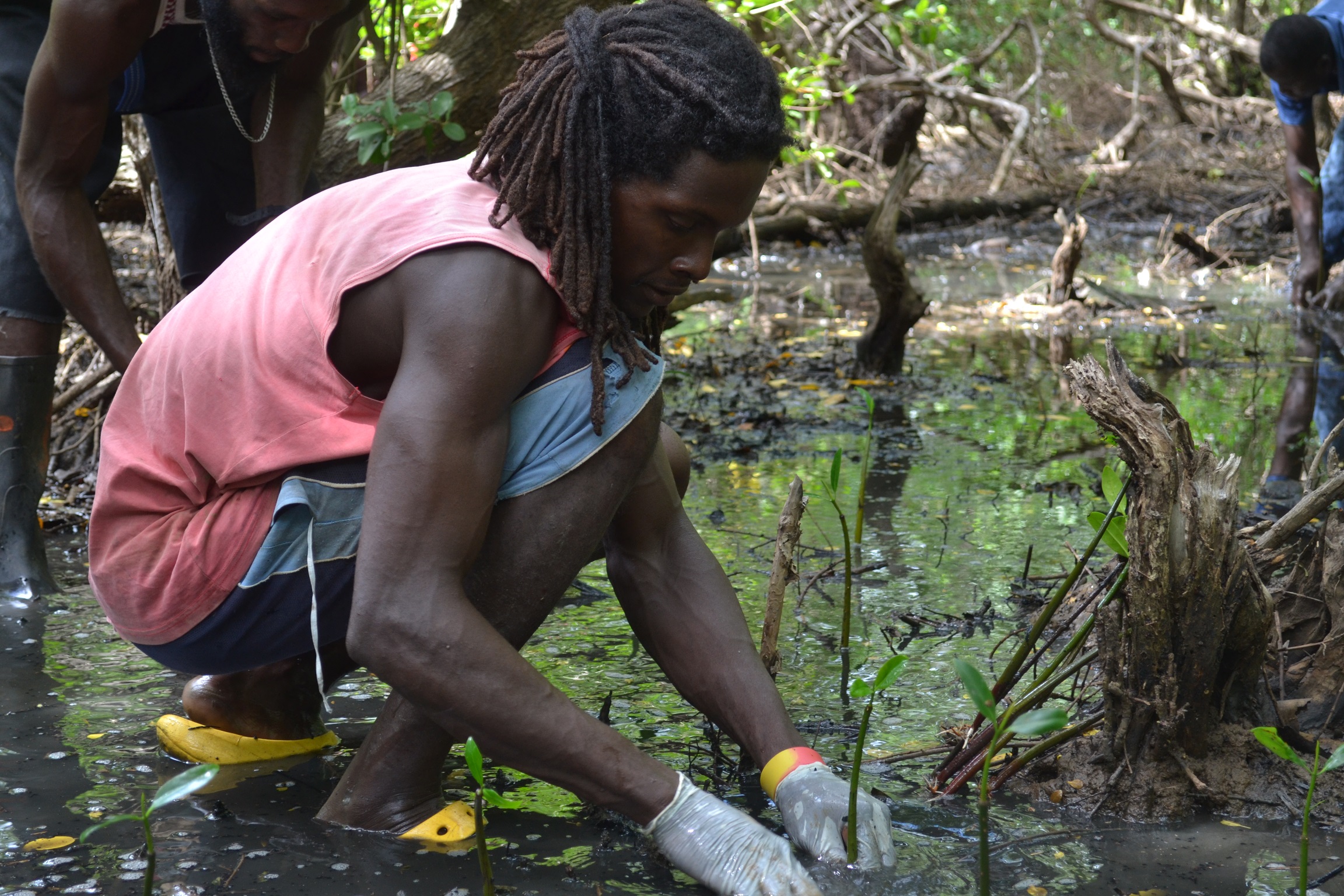

The natural mangrove forest and coastal vegetation of the project area have been severely degraded over the past years due to the unsustainable use of members of the community paired with the adverse impact of aspects of climate change. This degradation therefore increased the coastal communities vulnerability to the impacts of climate change such as hurricanes, storm surges, and coastal flooding. Additionally, coastal (non-mangrove) vegetation were scant which decreased the stability of the shore area (beach).
The replanting of mangrove species improves the health of the mangrove area and its ecosystem services with respect to coastal protection as well as habitat provision for various flora and fauna.
As non-mangrove but salt tolerant species are necessary for overall beach stability and health of the coastal area, having a source of (preferably local) species to use for revegetation is critical. This requires the support of agencies/NGOs that can provide the relevant support. There is also a need for capacity development for community members on the process of revegetation. They are then able to continue the process on their own, thus leading to the long-term sustainability of the measures.
With the restoration/replanting of vegetation, it is important to have a working knowledge of the dynamics of the surrounding environment. Potential losses due to wave action need to be considered, along with the possibilities of little to no loss if plants are less exposed to wave ore erosion effects of the sea. The highest vegetation loss occurred in sections of the mangrove forest that was nearest to the shore where the high wave energy resulted in a 100% loss of the seedlings. In contrast, those that were planted further away from the shore showed over 90% successful growth. For replication purposes, if a decision is made to revegetate the shoreline area, the seedlings ought to be planted in material such as bamboo which may be sturdy enough to withstand the wave energy. Additionally, community awareness is crucial so that the accidental destruction of the plants are limited.